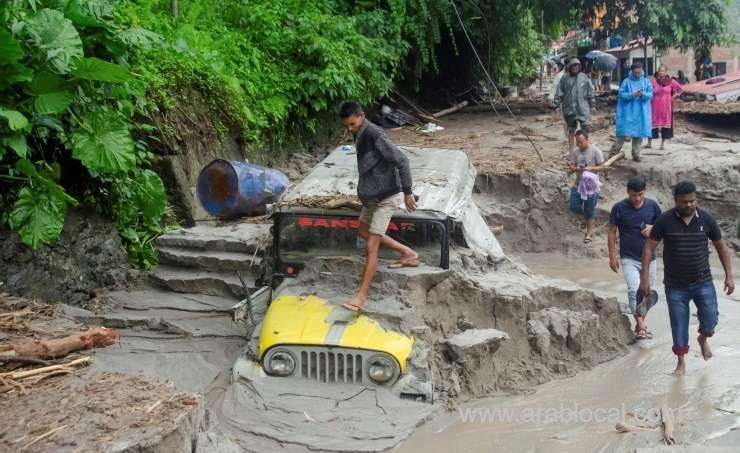
Officials reported on Saturday that Indian rescue teams are facing challenges in accessing flood-affected regions in the northeastern state of Sikkim. This difficulty arises from the persistent heavy rainfall in the area, where more than 140 people are currently missing.
The flooding crisis began when the Lhonak Lake overflowed on Wednesday following a cloudburst that triggered intense rains and a possible avalanche, leading to significant inundation along the Teesta River, as per Reuters.
V.B. Pathak, the state's chief secretary, stated, "We are awaiting improved weather conditions because only then can the air force and other rescue teams safely enter the flood-stricken areas."
The death toll has now reached 44, with an increase of 2 compared to Friday, according to a government official managing the rescue operations from Gangtok, the state's capital.
Numerous search and rescue personnel have been dispatched to Sikkim and the northern regions of the neighboring West Bengal state. Areas near the river are maintaining a high state of alert, with 15 army personnel among those still unaccounted for.
Approximately 2,000 tourists located in the Lachung, Lachen, and Chungthung areas in north Sikkim are reported to be safe. The army has provided them with satellite phones to facilitate communication with their families, according to another official.
The loss of at least 13 bridges has significantly impeded rescue efforts. All bridges downstream of the NHPC hydropower station Teesta-V have either submerged or washed away. Additionally, a key highway connecting Sikkim to Siliguri in West Bengal has collapsed due to the floods.
Local lawmakers are exploring the possibility of utilizing trekking routes to reach areas affected by the disaster, according to Bandana Chettri, a spokesperson for the state's tourism ministry.
These floods represent one of the most severe disasters in the region in over five decades and are part of a series of extreme weather events that have caused extensive damage in the Himalayas of South Asia. Scientists attribute these events to climate change.
Sikkim, a small Buddhist state located between Nepal, Bhutan, and China, is home to approximately 650,000 people.